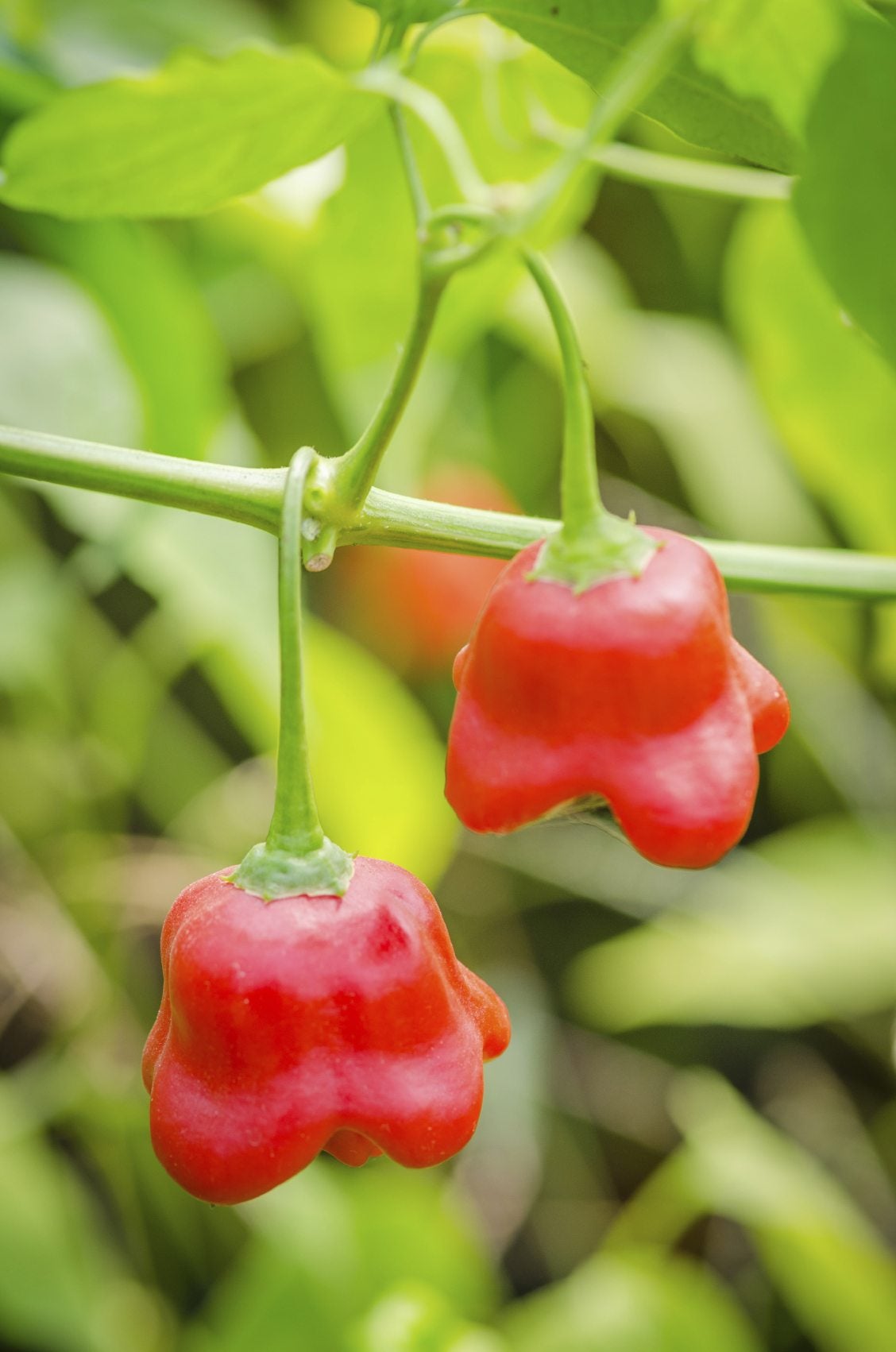Hot Pepper Plants: Tips On Growing Peppers For Hot Sauce

If you're a lover of all things spicy, I’m betting you have a collection of hot sauces. For those of us who like it four star hot or greater, hot sauce is often an essential ingredient in our culinary masterpieces. In recent years, a dizzying array of these tongue-blistering to tame delights are available to the consumer, but did you know that making your own is fairly simple and begins with growing your own peppers for hot sauce making? So what are the best peppers for making hot sauce? Read on to find out.
Types of Hot Peppers for Making Sauce
There are an almost unending number of hot pepper plants to choose from. Chili colors alone range from brilliant orange to brown, purple, red, and even blue. The heat levels vary according to the Scoville heat index, a measure of the capsaicin in the pepper -- from knock your socks off hot to a subtle tingling on the tip of your tongue. With such variety it's difficult to narrow down which chili pepper to plant. The good news is that they all can make amazing hot sauce. Keep in mind that peppers in the garden tend to cross-pollinate, so unless you plant only one type of hot pepper plant, it’s really a crap shoot as to how hot different varieties may become. I like the element of surprise, however, and utilizing different types of hot peppers for sauce making is really somewhat of an experiment. Start with a small batch first. Too hot? Try a different combination, or try roasting the peppers instead of using them fresh, which will impart a whole new flavor profile. Anyway, I digress, back to types of hot peppers for sauce making.
Hot Peppers for Sauce
Peppers are categorized partially by their heat level on the Scoville scale:
- Sweet/mild chili peppers (0-2500)
- Medium chili peppers (2501-15,000)
- Medium hot chili peppers (15,001-100,000)
- Hot chili peppers (100,001-300,000)
- Superhots (300,001)
Mildly spiced peppers include:
- Paprika chili, which is usually dried and ground.
- Soroa chili, also dried and ground.
- Aji Panc, a very mild deep red to burgundy pepper.
- Santa Fe Grande, or yellow hot chili
- Anaheim, a mild and medium sized pepper used both green and red.
- Poblano is a very popular variety that is dark green, gradually ripening to dark red or brown and is often dried – called ancho chili.
- Hatch chili peppers are also in the mild Scoville scale and are long and curved, perfect for stuffing.
- Peppadew peppers are grown in the Limpopo province of South Africa and are actually the brand name of sweet piquant peppers.
- Espanola, Rocotillo, and New Mex Joe E Parker peppers are also on the mild side.
Pasilla chili peppers are really interesting. They are dried chilaca peppers known as pasilla bajio or chile negro when fresh. Eight to ten inches long, this pepper’s heat index ranges from 250 all the way up to 3,999 Scovilles. So, these peppers range from mild to medium. Getting a little bit warmer, here are a few medium choices:
- Cascabel chilies are small and deep red.
- New Mex Big Jim are a giant varietal and is a cross between a few different types of chilies and a Peruvian chili
- Still hotter are Jalapenos and Serrano peppers, which I have found can vary from very mild to slightly spicy.
Cranking the heat up, here are some medium hot peppers:
The following are considered hot chili peppers:
Gardening tips, videos, info and more delivered right to your inbox!
Sign up for the Gardening Know How newsletter today and receive a free copy of our e-book "How to Grow Delicious Tomatoes".
- Fatalii
- Orange Habanero
- Scotch Bonnet
And now we shift it into nuclear. The superhots include:
- Red Savina Habanero
- Naga Jolokia (aka Ghost Pepper)
- Trinidad Moruga Scorpion
- Carolina Reaper, deemed one of the hottest peppers ever
The above list is by no means comprehensive and I'm sure you can find many other varieties. The point is, when growing peppers for hot sauce making, narrowing down your choices may be the challenge. As for the best peppers to make hot sauce? Any one of the above combined with the three basic elements for the perfect hot sauce – the sweet, the acidic, and the hot – is sure to create the perfect spiced elixir.

Amy Grant has been gardening for 30 years and writing for 15. A professional chef and caterer, Amy's area of expertise is culinary gardening.
-
 Looking For Plants To Give You The Soft And Fuzzies? Try These 5 Fuzzy Leaf Plant Options
Looking For Plants To Give You The Soft And Fuzzies? Try These 5 Fuzzy Leaf Plant OptionsLovers of texture, drama, silver foliage and tactile plants will adore these special sensory garden additions. These fuzzy leaf plant options will leave you all aglow
By Susan Albert
-
 Get Ready For A Summer Of Hummers! Grow These Full Sun Hummingbird Plants and Flowers
Get Ready For A Summer Of Hummers! Grow These Full Sun Hummingbird Plants and FlowersIf you’re lucky enough to enjoy a sunny backyard, make sure you are maxing out on your pollinator opportunities and grow these full sun hummingbird plants and flowers
By Tonya Barnett